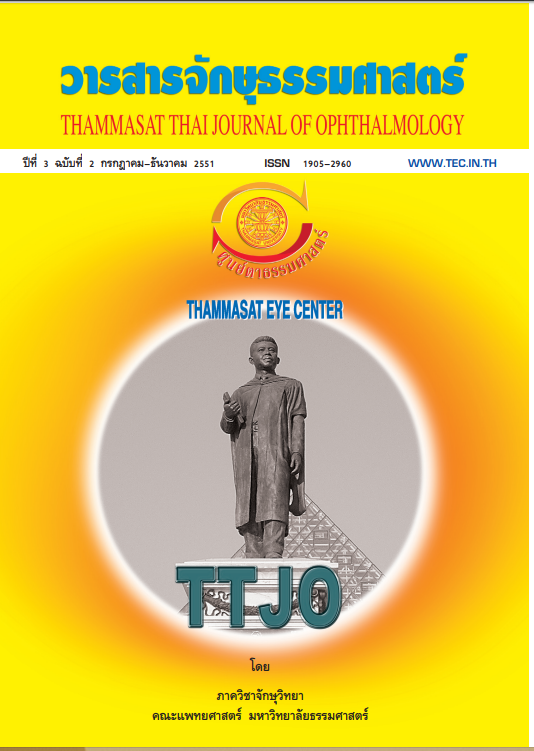Chronic Anterior Uveitis with Ocular Hypertension
Main Article Content
Abstract
Introduction
Chronic hypertensive anterior uveitis is one of the doubtful diseases. The differential diagnosis includes Fuchs๛ heterochromic iridocyclitis (FHI)1 , Posner-Schlossman syndrome (PSS)2, and herpesviral-associated iridocyclitis. Lawrence firstly described a condition of iris heterochromia and cataract in 1843. Sixty three years later, Ernst Fuchs expanded the work and made the disease be recognized. The typical patient is a young adult with unilateral subtle anterior uveitis and generalized or patchy iris atrophy. Scattered small stellate keratic precipitates (KPs) can be observed over the whole corneal endothelium. The patient๛s visual disturbance is usually due to cataract. Increased intraocular pressure in FHI is secondarily caused by steroid therapy. Posner-Schlossman syndrome (PSS), or glaucomatocyclitis crisis (GCC), is a slightly different condition. It manifests with recurrent episodes of highly elevated intraocular pressure and mild anterior uveitis. Keratic precipitates are small and distribute in the lower area of the corneal endothelium. Slightly dilated pupil and iris atrophy can be observed in an eye with multiple recurrent attacks. The inflammation and intraocular pressure respond well with topical steroid.


